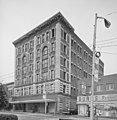
William Bartram was an American botanist, ornithologist, natural historian and explorer. Bartram was the author of an acclaimed book, now known by the shortened title Bartram's Travels, which chronicled his explorations of the southern British colonies in North America from 1773 to 1777. Bartram has been described as "the first naturalist who penetrated the dense tropical forests of Florida".
Citizens and Southern National Bank (C&S) began as a Georgia institution that expanded into South Carolina, Florida and into other states via mergers. Headquartered in Atlanta, Georgia; it was the largest bank in the Southeast for much of the 20th century. C&S merged with Sovran Bank in 1990 to form C&S/Sovran in hopes of fending off a hostile takeover attempt by NCNB Corporation. Only a year later, however, C&S/Sovran merged with NCNB to form NationsBank, which forms the core of today's Bank of America.

SMG, formerly Spectacor Management Group, was an American worldwide venue management group headquartered in West Conshohocken, Pennsylvania, that specialized in managing publicly owned facilities. It began their operation in 1977 with management of the Louisiana Superdome. It was one of the largest property management corporations in the world.

America's 11 Most Endangered Places or America's 11 Most Endangered Historic Places is a list of places in the United States that the National Trust for Historic Preservation considers the most endangered. It aims to inspire Americans to preserve examples of architectural and cultural heritage that could be "relegated to the dustbins of history" without intervention.

Frederick John Osterling was an American architect, practicing in Pittsburgh from 1888.
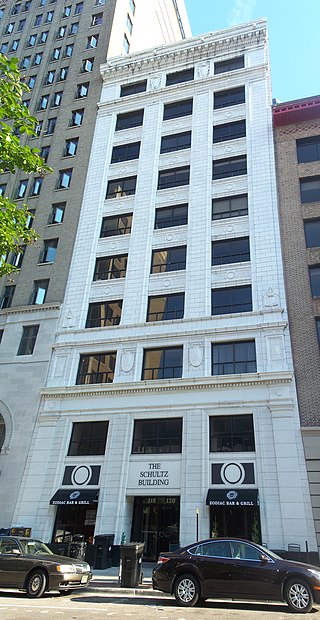
The Schultz Building, formerly the Atlantic National Bank Annex, is a historic building in Jacksonville, Florida, United States. It was built between 1925 and 1926 for the Atlantic National Bank as an annex to the Atlantic National Bank Building, located immediately behind it. It stands at 118 West Adams Street, and was added to the U.S. National Register of Historic Places in 1997 as part of the Downtown Jacksonville Multiple Property Submission.

Wilmington Trust is one of the top 10 largest American institutions by fiduciary assets. Wilmington Trust is currently a provider of international corporate and institutional services, investment management, and private banking. The firm was founded on July 8, 1903, as a banking, trust, and safe deposit company by DuPont president T. Coleman du Pont. In 2010, it became a subsidiary of M&T Bank.
Sovran Bank was a US-based regional bank that operated in Virginia between 1983 and 1990, and was the leading subsidiary of Sovran Financial Corporation. It was itself a product of a merger between First & Merchants Bank of Richmond and Virginia National Bankshares of Norfolk, both of which could trace back their history to the 1860s. In 1990, it was merged with Citizens & Southern National Bank to form C&S/Sovran Corp., which in turn merged with NCNB to form NationsBank which became Bank of America in 1998.

The Poughkeepsie Savings Bank building is located at 21-23 Market Street in the city of that name in the U.S. state of New York. It was the third home of that bank, the first in the city, chartered in 1831 by William Davies, on that site. After 20 years on nearby Main Street, the bank bought one of its current lots and built. In 1870 the adjacent lot was purchased and the building expanded yet again, reopening anew two years later. In 1911 the bank's success led it to commission a completely new building from the firm of Mowbray and Uffinger, who had designed many bank buildings across the Eastern states.
This is an incomplete list of historic properties and districts at United States colleges and universities that are listed on the National Register of Historic Places (NRHP). This includes National Historic Landmarks (NHLs) and other National Register of Historic Places listings. It includes listings at current and former educational institutions.

The Greensburg Downtown Historic District of Greensburg, Pennsylvania, is bounded approximately by Tunnel Street, Main Street, Third Street, and Harrison Avenue. It consists of 62 buildings on 21.8 acres (8.8 ha), with the most notable buildings from the years 1872-1930. The district's oldest structure (1872) is the former Masonic Temple at 132 South Main Street. The Academy Hill Historic District is directly to the north of downtown Greensburg.
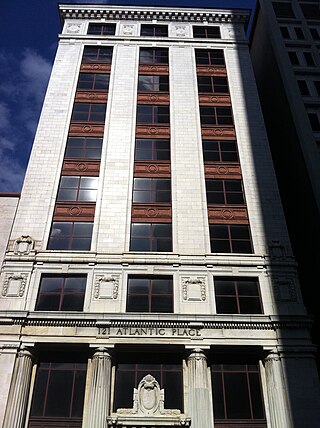
121 Atlantic Place, formerly the Atlantic National Bank Building, is a historic skyscraper in Jacksonville, Florida. It was built in 1909 as the headquarters for the Atlantic National Bank, and is located at 121 West Forsyth Street. It was the tallest building in Jacksonville and in Florida from 1909 to 1912, and remains an office building today.
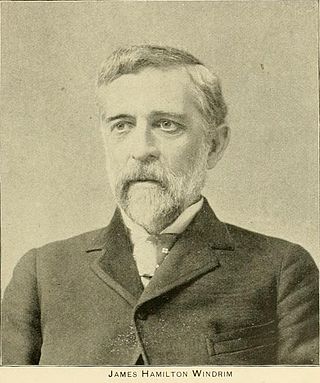
James Hamilton Windrim was a Philadelphia architect who specialized in public buildings, including the Masonic Temple in Philadelphia and the U.S. Treasury. A number the buildings he designed are on the National Historic Landmarks and/or the National Register of Historic Places, including the Masonic Temple in Philadelphia and the National Savings and Trust Company building in Washington, DC.

The Greenwich Avenue Historic District is a historic district representing the commercial and civic historical development of the downtown area of the town of Greenwich, Connecticut. The district was listed on the National Register of Historic Places on August 31, 1989. Included in the district is the Greenwich Municipal Center Historic District, which was listed on the National Register the year before for the classical revival style municipal buildings in the core of Downtown. Most of the commercial buildings in the district fall into three broad styles, reflecting the period in which they were built: Italianate, Georgian Revival, and Commercial style. The district is linear and runs north–south along the entire length of Greenwich Avenue, the main thoroughfare of Downtown Greenwich, between U.S. Route 1 and the New Haven Line railroad tracks.
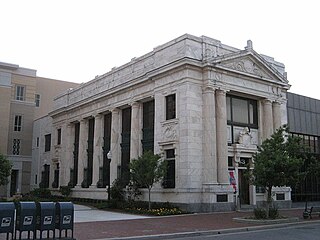
The First National Bank Building, also known as the Citizens and Peoples National Bank Building, is an historic two-story Classical Revival style building located at 213 South Palafox Street in Pensacola, Escambia County, Florida. Built in 1906-1908 by Charlie Hunter, it was designed by the New York architectural firm Mowbray and Uffinger. In 1989, the building was listed in A Guide to Florida's Historic Architecture, published by the University of Florida Press.
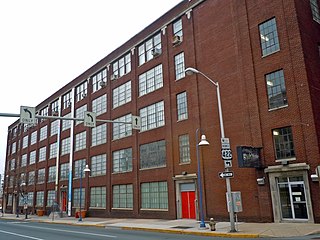
Muhlenberg Brothers was one of the dominant architecture/engineering firms in Reading, Pennsylvania during the first half of the 20th century, founded by a member of the Muhlenberg political dynasty.

The architecture of Jacksonville is a combination of historic and modern styles reflecting the city's early position as a regional center of business. According to the National Trust for Historic Preservation, there are more buildings built before 1967 in Jacksonville than any other city in Florida, though few structures in the city center predate the Great Fire of 1901. Numerous buildings in the city have held state height records, dating as far back as 1902, and last holding a record in 1981.

Historic Hotels of America is a program of the National Trust for Historic Preservation that was founded in 1989 with 32 charter members; the program accepts nominations and identifies hotels in the United States that have maintained their authenticity, sense of place, and architectural integrity.


